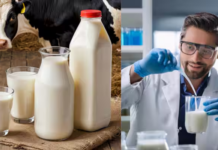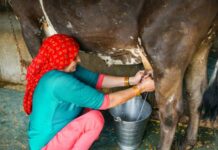New Delhi, April 01, 2024: What’s new and rare for the dairy industry is that we are experiencing nearly a year of weaker global milk supply. What’s not new is that for the seventh consecutive month, milk production has documented a decline, which is unheard of when you look at the long-term view of the dairy industry.
Lucas Fuess, a senior dairy analyst for RaboResearch Food & Agribusiness, commented that we have to look back to 2021 when something similar happened, and shares that caused the bullish price response that we saw in 2022.
“What’s different now is that we don’t have the milk supply globally, but we also don’t have the demand,” he told a group of attendees at the High Plains Dairy Conference in Amarillo, Texas in early March. “For months now we’ve just kind of been spinning our tires moving sideways range bound on pricing because our milk supply is being met with weaker demand.”
Wins for Dairy
Dan Basse, an economist with AgResource Company, says that the commodity side of the equation will help dairy producers in 2024, as relatively lower corn prices help lower the cost of the feed ration. He also says that oncoming soybean crushing plants will help lower the cost of soybean meal for the second half of the year.
“Feed prices stay down and that should be helpful,” he says. “Fuel prices also stay down.”
However, Basse said the big optimism for dairy lies in what he calls 2024 being the year of protein.
“It’s all about beef, poultry and dairy,” Bassw says, sharing that the U.S. beef cow herd is at its lowest level since 1960 according to the reports published in dairyherd.com.
According to Fuess, another big win for dairy is the way the sustainability and regulatory challenges are going to negatively impact dairy’s competition around the globe.
“It’s not to say that we don’t have struggles or challenges or things from a sustainability standpoint here for us, but we’ve seen milk production declining in the European Union and New Zealand and that increasingly pushes those global dairy buyers to us here in the U.S. It’s up to us to be able to continue to drive those export markets, close relationships and capitalize on that growing global.”
Risk Management is Essential
Risk management conversations are essential to determine the best possible solutions for a farm and Fuess says it’s all about determining what their comfort level of risk tolerance is.
“It’s not necessarily one size or one answer fits all approach. It’s going to be very individual to the operation,” he says. “I think ultimately the conversation is never complete there because strategies might shift from year to year or new programs might arise. I would push the room to constantly have that on their mind and making sure that they’re watching costs and risk management and not letting your revenue of the company or your input costs be subject to the trends in the market and not have any control on that.”
Phil Plourd, president of Ever.Ag Insights, concurs with Fuess and shares that whether you look at the input or sales side of the ledger, producers need to have a firm plan.
“I know that’s really hard at times when prices are low, but any difference in opinion on whether it’s important to maintain a risk management strategy rather than trying to market time,” he says.
































